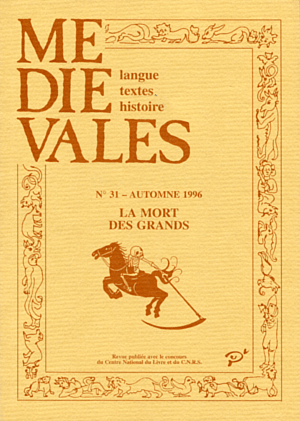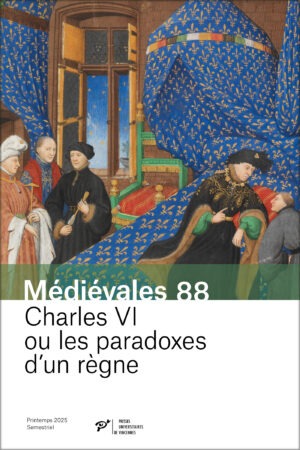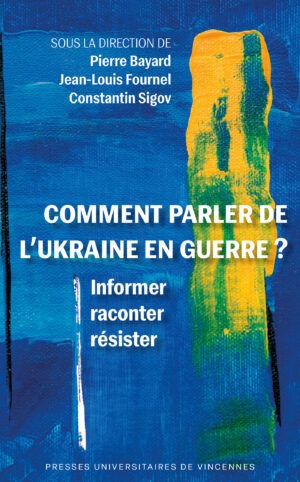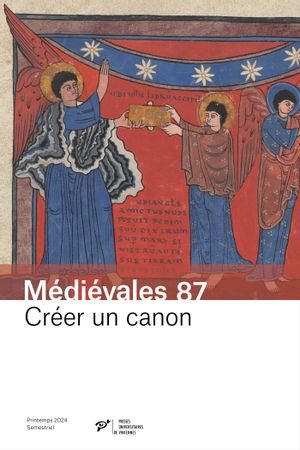Ian WOOD : « EccIesiatical and Senatorial Burials in the Rhône Valley (400-600) »
This paper proposes to throw Iight on the conditions of inhumation observed by the Christian nobility in the Rhône basin in the fifth and sixth centuries. Contributing sources include epigraphic, juridical, narrative, iconographic, and archaeological documents. Their analysis shows that despite Christianization and its possible influence on funerary Iiturgy, and the practice of entombment near saintly bodies or within churches, the funerary customs of the Christian nobility had barely changed in Southeast Gaul between the fourth and the sixth centuries : the same feasts, the same tendencies to ostentation, the same concern for the perpetuation of the name and the memory of the deceased, the same practice of the sumptuous adomment of graves accompanied by offerings.
Patrick PÉRIN : « Saint-Germain-des-Prés, the First Necropolis of the Kings of France »
Erected by Clovis and Clotilda soon after the victory of Voui llé (507), the Saints-Apôtres of Paris (subsequently renamed Sainte-Geneviève) were not destined to become a dynastic mausoleum. It was rather the Parisian basilica of Sainte-Croix-et-Saint-Vincent (renamed Saint-Germain-des-Prés), founded in the following generation par Childebert I, which asserted itself as the royal necropolis of the Neustrians from 558 to 675 ; Saint-Denis became an alternative burial place from the time of Dagobert’s reign (628-639). As for the Austrasian and the Burgundian kings, they do not seem to have disposed of speci fic dynastic burialgrounds. Saint-Germain-des-Prés, the place of burial favored by the Merovingian kings, has been the site of a series of archaeological finds from the seventeenth century to our times, thus providing additional knowledge of the royal necropolis and its environment.
Alain DIERKENS : « The Death, the Funeral, and the Tomb of King Pepin the Short (768) »
In this paper, we examine what we know of Pepin the Short’s death on september 24, 768, and of his tomb at Saint-Denis. We explore such subjects as : the choice of Saint-Denis for his burial place, the significance of an ante limina burial and the archaeological contributions towards this question, the reasons why the body was buried face down, the nature (and the date) of the augmentum which Charlemagne had ordered to be constructed on his father’s tomb, and the fate of the first Carolingian king’s remains up to the first quarter of the thirteenth century. In conclusion, we stress the importance of the ideological implications of the ostentatious humility which Pepin favored and which his sons consequently displayed.
Janet L. NELSON : « The death of Charles the Bald »
Charles the Bald died at 54 in 877. Charles’interest in the representation of royalty extended to the careful planning of his own burial and commemoration at St. Denis. In the event, Charles died in a remote spot in the French Alps. Contemnporary chroniclers described the premature putrescence and unbearable stench of Charle’s corpse. After a botched embalming, his followers, intent on carrying the body to St. Denis, had to bury it instead at Nantua. The Annals of St. Bertin’s wording echoed Il Maccabees ix, where the rotting body of the stil living Antiochus Epiphanes signalled the tyrant’s fate. Thus Hincmar, author of the Annals and longtime royal counsellor, intimated his own criticism of Charles. Yet Hincmar also described Charles’death-bed transmission of the royal insignia to his heir. Charles’own body rotted : the body of the realm lived on.
Michel LAUWERS : « The Sepulchre of the Fathers and the Ancestors. Notes on the Cult of the Dead in the Feudal Age »
Although judged useless as regards faith, funeral rites and the burials of the deceased were part of the Church office and became incorporated, especially since the Carolingian period, in an extensive and complex ritual founded on “memory”. During the eleventh and twelfth centuries the converging of ideas asserted both in the ancient culture and in the Bible, uses particular to customary societies, and practices linked to the assertion of feudal powers gave rise to a veritable “ncestors cuIt”, as well as the constitution of familial sepulchres. Indissociable from some forms of exchange, funeral and com memorative rites of the feudal age are testimonies to the existence of a kind of social “covenant” between the two sides lay and ecclesiastical – of the ruling class.
Dominique IOGNA-PRAT : « From the Very Special to the Ordinary Dead : The Pastoral Funerary Observances at Cluny (Eleventh-Twelfth Centuries) »
Throughout the eleventh and twelfth centuries, Cluny and its dependencies offered a funerary space of the first importance, a haven much sought-after by laymen seeking reconciliation and a good avocate -Saint Peter – at the hour of death. The Ecclesia cluniacensis, with its cemeteries and necrologies, thus favored the constitution of a “Fraternity” where monks and laymen were brought together and two aristocraties mixed. This study treating of the pastoral funerary func tions destined for the great attemps to explore in all its aspects the Clunisian system of seigneurial exploitation of death.
Patrick HENRIET : « Chronicle of Several Announced Death : The Saint Abbots of Cluny (Tenth-Twelfth Centuries) »
From the midtenth to the midtwelfth century, hagiography allows us to delineate the great ecclesiological orientations at Cluny. The death scene, from Odilon (1049) onwards, becomes a key passage of the various vitae. The model proposed to us is one where characteristically liturgy takes precedence over aIl other forms of communication, thus enabling to differentiate the texts examined from other hagiographie, yet contemporary, works.
Anne ROLET : « Venance Fortunat’s Christian Arcadia. A Cultural, Spiritual, and Social Project in Merovingian Gaul »
In a certain number of his poems, Venance Fortunat, sixth century Latin poet of Merovingian Gaul, evokes loci amoeni in an association of Virgilian reminiscences and scriptural citations. The garden retains its classical significance as a privileged place, offering the aristocrat a propitious haven for religions and moral meditation ; set apart from the political and civil life, but it also evokes the Christian model of monastic isolation. Fortunat uses Arcadian motives to celebrate not only the moral perfection as Christians of the GalloRoman bishops and the Frankish nobles, but also the traditional social and financial roles imposed upon them by their aristocratic condition : indeed, since Martin of Tours, the active life and the contemplative life have become reconciled in the episcopal career. By way of the locus amoenus which glorifies the excellence of the Christian, Fortunat offers the Frankish aristocracy a model of acculturation which resumes the fundamental values of Romanity.
Pierre SÉLAMME : « “The Stone and the Doorway”, an Unknown Misadventure : A New Approach to the 45 th and 46 th octets of Villon’s Testament »
The new approach to the 4Sth and 46 th octets of Villon’s Testament proposes to follow the poet’s vengeful double path, evoking the inverted world of violence and the recreation of Chaos confronting the World which bas rejected it.




